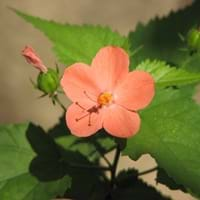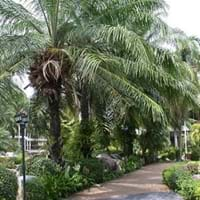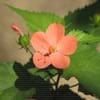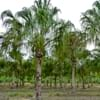Life Span
Annual and Perennial
Annual
Type
Broadleaf Evergreen
Palm or Cycad
Origin
Not Available
Eastern Africa, Northern Africa, Middle Africa
Types
Not Available
Not Available
Habitat
gardens, Grassland, Homesteads, Subtropical climates, tropical environments
Forest edges
USDA Hardiness Zone
9-15
10-15
AHS Heat Zone
Not Available
12-10
Sunset Zone
21,22
Not available
Habit
Oval or Rounded
Upright/Erect
Flower Color
Salmon
Ivory
Flower Color Modifier
Bicolor
Bicolor
Fruit Color
Non Fruiting Plant
Orange
Leaf Color in Spring
Dark Green
Green, Dark Green
Leaf Color in Summer
Dark Green
Green, Dark Green
Leaf Color in Fall
Dark Green
Green, Dark Green
Leaf Color in Winter
Dark Green
Green, Dark Green
Leaf Shape
Ovate
Long Linear
Plant Season
Spring, Summer, Fall, Winter
Spring, Summer, Fall, Winter
Sunlight
Full Sun, Partial Sun
Full Sun
Growth Rate
Medium
Medium
Type of Soil
Loam
Loam, Sand
The pH of Soil
Neutral
Acidic, Neutral
Soil Drainage
Well drained
Well drained
Bloom Time
Early Summer, Summer, Late Summer, Early Fall, Fall, Indeterminate
Indeterminate
Tolerances
Drought, Variety of soil types
Not Available
Where to Plant?
Ground, Pot
Ground
How to Plant?
Stem Cutting, Tip cutting, Vegetative Reproduction
Seedlings, Transplanting
Plant Maintenance
Medium
Medium
Watering Requirements
It cannot sustain wet-feet, Keep the Soil well drained, Requires watering in the growing season, Water Deeply, Water frequently while growing, Water more in summer, Water when soil is dry
Does not require lot of watering, Use and maintain water-efficient soaker hoses, Use Mulches to help prevent water loss during hot and windy weather, Water in morning to avoid prompting diseases, Water twice a day in the initial period
In Summer
Lots of watering
Lots of watering
In Spring
Moderate
Moderate
In Winter
Average Water
Average Water
Soil pH
Neutral
Acidic, Neutral
Soil Type
Loam
Loam, Sand
Soil Drainage Capacity
Well drained
Well drained
Sun Exposure
Full Sun, Partial Sun
Full Sun
Pruning
A hard prune may be necessary if the plant becomes woody, Cut leaves after fall, Cut or pinch the stems, Pinch or prune as they grow to promote branching and bushiness, Prune for shortening long shoots, Prune in early summer, Remove deadheads
Cut or pinch the stems, Prune for shortening long shoots, Remove dead or diseased plant parts
Fertilizers
Apply 10-10-10 amount, Balanced liquid fertilizer, Do not fertilize new plants until at least a month, Use a low phosphate fertilizer to improve the quality of the blooms
All-Purpose Liquid Fertilizer
Pests and Diseases
Aphids, Mealybugs, Red spider mite, Scale, Thripes, Whiteflies
Red blotch
Plant Tolerance
Drought, Variety of soil types
Drought
Flowers
Showy
Insignificant
Flower Petal Number
Single
Single
Foliage Texture
Medium
Bold
Foliage Sheen
Glossy
Matte
Attracts
Bees, Butterflies, Hummingbirds
Birds
Allergy
no allergic reactions
Asthma
Aesthetic Uses
Beautification, Borders, Landscape Designing
Showy Purposes
Beauty Benefits
Hair Conditioner, Not Available, Prevents greying of hair, Prevents Premature Baldness, Promotes Healthy Hair, Promotes healthy skin, Speed hair growth
Not Available
Environmental Uses
Air purification
Air purification
Medicinal Uses
anti-inflammatory, Diuretic, Hair Loss, High blood pressure, Vitamin C
High blood pressure, High cholestrol, Malaria, Weight loss
Part of Plant Used
Flowers, Leaf Stalks, Leaves
Whole plant
Other Uses
Culinary use, Employed in herbal medicine, Jam, Jelly, Making Shampoo, Oil is used for aromatherapy, Oil is used in perfume, soaps, creams, etc., Showy Purposes, Traditional medicine, Use in Chinese herbology, Used As Food, Used as Ornamental plant, Used for bedding in gardens, Used for fragrance, Used for its medicinal properties, Used in making beverages, Used in paper industry, Used in salads, Used to make hair tonic
Used As Food, Used for producing cooking oil
Used As Indoor Plant
No
No
Used As Outdoor Plant
Yes
Yes
Garden Design
Container, Foundation, Houseplant, Mixed Border, Tropical
Feature Plant, Shade Trees, Street Trees, Tropical
Botanical Name
Hibiscus hirtus—Lesser Mallow
ELAEIS guineensis
Common Name
Lesser Mallow
African Oil Palm
In Hindi
Hibiscus Lesser Mallow
अफ्रीकी ऑयल पाम
In German
Hibiscus Lesser Malve
African Oil Palm
In French
Hibiscus Lesser Mallow
L'huile de palme africaine
In Spanish
Hibiscus menor Mallow
Aceite de Palma Africana
In Greek
Hibiscus Λιγότερο Μολόχα
Αφρικανική φοινικέλαιο
In Portuguese
Hibiscus Lesser Mallow
Óleo de palma Africano
In Polish
Hibiscus Lesser Mallow
Afrykański Olej palmowy
In Latin
Hibiscus minorem Abutilon
African Oil Palm
Phylum
Magnoliophyta
Not Available
Class
Magnoliopsida
Liliopsida
Family
Malvaceae
Arecaceae
Clade
Angiosperms, Eudicots, Rosids
Not Available
Subfamily
Malvoideae
Arecoideae
Number of Species
Not Available
Season and Care of Hibiscus Lesser Mallow and African Oil Palm
Season and care of Hibiscus Lesser Mallow and African Oil Palm is important to know. While considering everything about Hibiscus Lesser Mallow and African Oil Palm Care, growing season is an essential factor. Hibiscus Lesser Mallow season is Spring, Summer, Fall and Winter and African Oil Palm season is Spring, Summer, Fall and Winter. The type of soil for Hibiscus Lesser Mallow is Loam and for African Oil Palm is Loam, Sand while the PH of soil for Hibiscus Lesser Mallow is Neutral and for African Oil Palm is Acidic, Neutral.
Hibiscus Lesser Mallow and African Oil Palm Physical Information
Hibiscus Lesser Mallow and African Oil Palm physical information is very important for comparison. Hibiscus Lesser Mallow height is 300.00 cm and width 60.00 cm whereas African Oil Palm height is 910.00 cm and width 460.00 cm. The color specification of Hibiscus Lesser Mallow and African Oil Palm are as follows:
Hibiscus Lesser Mallow flower color: Salmon
Hibiscus Lesser Mallow leaf color: Dark Green
African Oil Palm flower color: Ivory
- African Oil Palm leaf color: Green and Dark Green
Care of Hibiscus Lesser Mallow and African Oil Palm
Care of Hibiscus Lesser Mallow and African Oil Palm include pruning, fertilizers, watering etc. Hibiscus Lesser Mallow pruning is done A hard prune may be necessary if the plant becomes woody, Cut leaves after fall, Cut or pinch the stems, Pinch or prune as they grow to promote branching and bushiness, Prune for shortening long shoots, Prune in early summer and Remove deadheads and African Oil Palm pruning is done Cut or pinch the stems, Prune for shortening long shoots and Remove dead or diseased plant parts. In summer Hibiscus Lesser Mallow needs Lots of watering and in winter, it needs Average Water. Whereas, in summer African Oil Palm needs Lots of watering and in winter, it needs Average Water.





